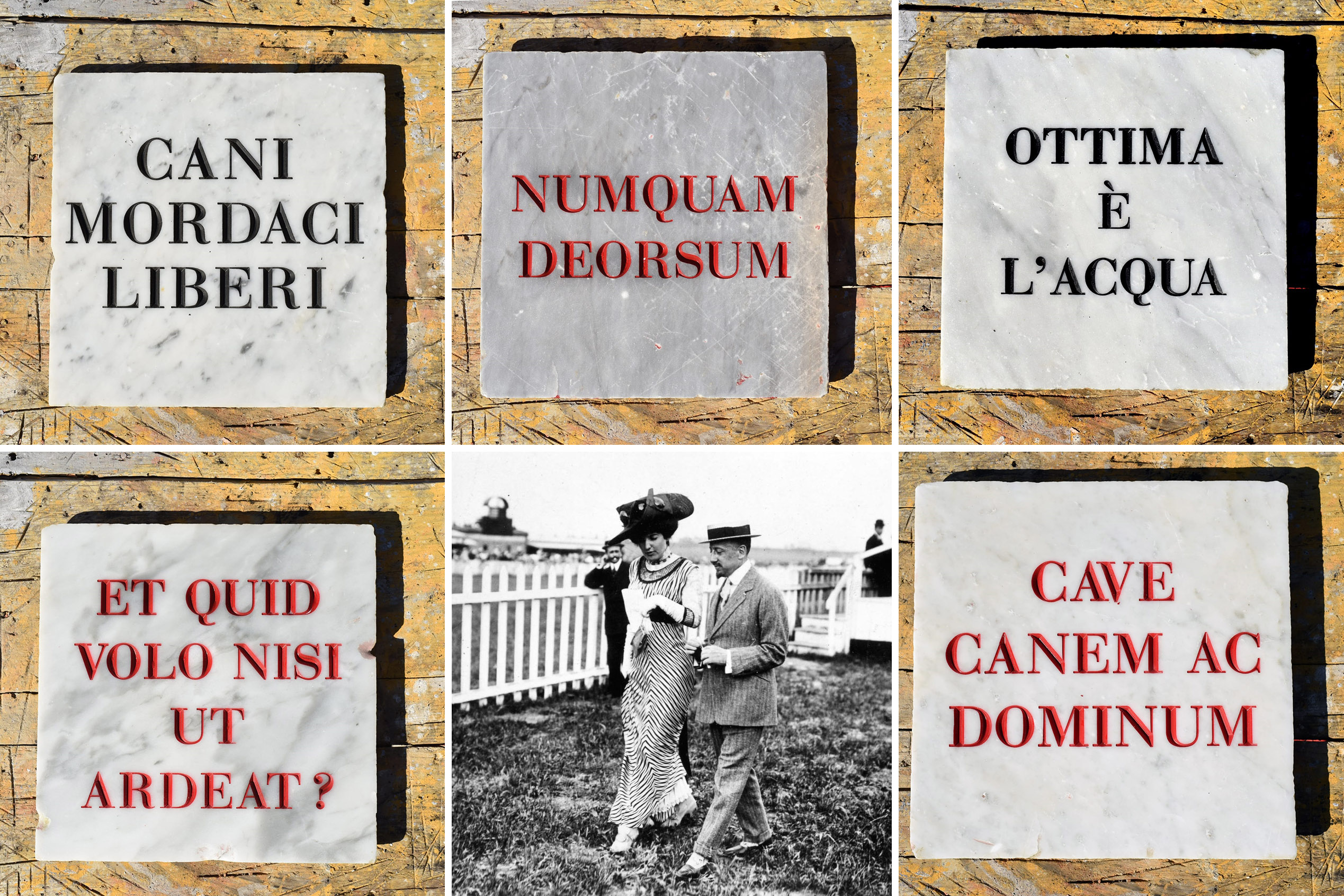Collection of D'Annunzio mottos - February 2019
Collection of D'Annunzio mottos inspired by Roman epigraphs.
Free reproduction, on antique 32x32 cms tiles in white Carrara and gray Bardiglio marble,
of the plates designed by Gabriele D\'Annunzio and positioned at Villa La Capponcina,
Settignano, Florence, where the Italian poet lived between 1898 and 1910.
These epigraphs can be produced by engraving any motto.
Gabriele D\'Annunzio loved the mottos and often he coined new ones in Italian or in Latin.
The motto consecrates, contains and perfects every gesture or fact of D\'Annunzio\'s life,
it adorns and ennobles everything he possesses, marks and characterizes the periods of his life.
The Italian poet left an important mark on the villa in via della Capponcina 32.
Here he lived as a Renaissance prince, surrounded by fifteenth-century furniture,
numerous servants, a pack of dogs and selected horses.
The villa is best known for being the scene of the poet\'s chatted love with Eleonora Duse who lived
in Villa Porziuncola, a few steps from there (at number 75, on the other side of the street).
See all our epigraphs.
«When we think of a Roman city in the times of the Empire, we imagine colonnades of temples, arches of triumph, baths, circuses, theaters, equestrian monuments, busts and herms, bas-reliefs.
It does not occur to us that in this silent setting of stone there is no element that was the most characteristic, even visually, of Latin culture: writing.
The Roman city was above all a written city, covered by a layer of writing that extended over the pediments, the headstones, the signs. Writings present everywhere painted, scratched, engraved, suspended on wooden tables or drawn on white squares, [...] indifferently scattered everywhere there was the entrance of a shop, a crossroads, a free piece of plaster at man\'s height.»
Italo Calvino, La città scritta, 1980 from Collezione di sabbia
Bibliography:
Collezione di sabbia by Italo Calvino
I motti dannunziani by Andrea Balestri
“Villa La Capponcina” from Wikipedia

